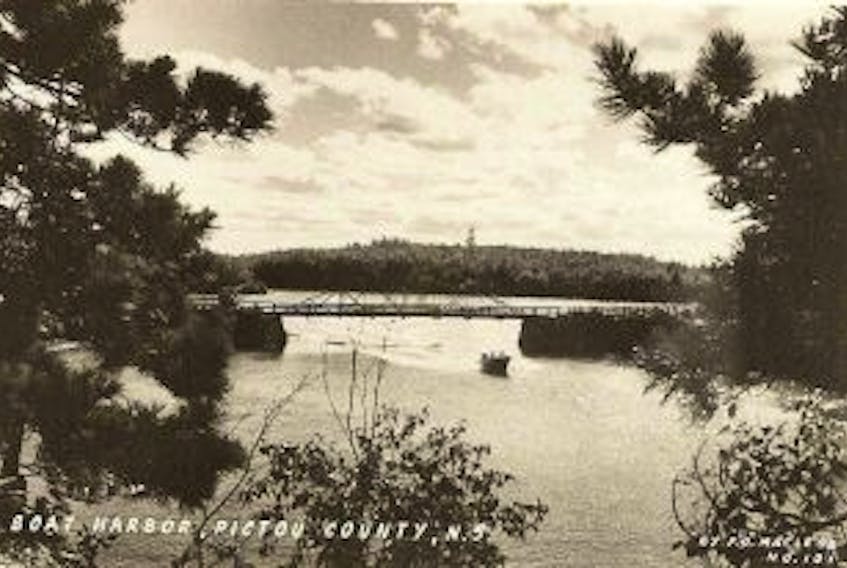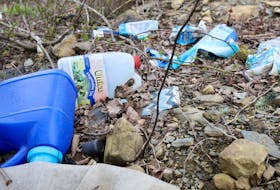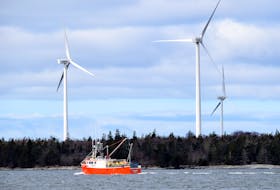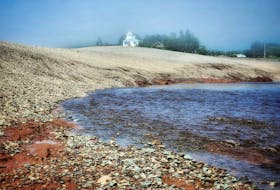As a child it was a place that she and others from the Pictou Landing Reserve went to swim, fish and dig for clams. In winter time she remembers going with her father to look for a Christmas tree. In summer there was a large rock they used as a diving board.
“It was like a paradise back there.”
Paradise was lost when effluent from the Boat Harbour Treatment Facility, which for years was untreated, poured into the area.
Chief Andrea Paul didn’t have a chance to see the area in its glory but hopes to someday now that plans are in place for closing the treatment facility and remediating the area.
“Hopefully one day we’ll be fishing out of there and swimming out of there and enjoying the traditional lands,” she said.
Shirley Francis hopes so too. She remembers swimming there and wonders if it’ll be clean enough to do it again.
“It was like the most beautiful lake you had ever seen,” she says.
Responsibility for that task lies with Ken Swain.
He is the project lead for the clean up of Boat Harbour which will seek to decontaminate the area that has been polluted by contaminants from the pulp mill at Abercrombie as well as Canso Chemicals.
Swain is well experienced in the cleaning of environmental sites having led in the rehabilitation of the Sydney Tar Ponds and Coke Ovens Remediation Project, the 10 year, $400 million project which cleaned up one of Canada's most contaminated sites over the period 2004 to 2014.
While who is responsible for the replacement of the treatment facility is still a matter of debate, what is clear is that the province is the ones who will pay for and take care of the clean up of the site that it commissioned in the 60s.
The Boat Harbour Treatment Facility will close in 2020, but Swain said the planning process for cleanup is already well underway.
“We’re making sure we have the right resources. We’ve already been doing some brain storming with some remediation expects.”
He said they already have a lot of information available about the situation and will be working in the years leading up to the 2020 closure to finalize a plan and start some of the remediation.
Along the way he said there will be lots of public consultation, particularly with the people of Pictou Landing, some who remember swimming in the area before it was contaminated.
“We feel it’s imperative they weigh in what they want Boat Harbour in the future to be,” he said.
Historically, Boat Harbour was a tidal lagoon. Lagoons like this rise and fall with the tides, just like the ocean. It could be restored to a lagoon again or could be made into a freshwater lake.
He said once the plans are finalized they’re hoping to do some early remediation in a couple coves. Their current plan would be to dry them and determining the most effective form of clean up. That way when the facility does close in 2020, they can potentially dry the entire area for clean up.
“It’ll take three to four years to finish all that planning and then we’ll be in a position to start the remediation project at the point,” he said. “Then we expect the actual remediation will take about four years. It may be as quick as three or may take five.
There is an estimated 165,000 cubic metres of fluffy sediment laying on the surface of the original harbor bottom which needs to be removed, he explained. Drying the area before removal is the best way to make sure they capture all the contaminants. If that approach is taken, then those contaminants would probably be removed and taken to a safe landfill.
He said there are no major brooks or rivers flowing into the area, which makes it easier to drain than the Sydney Tar Ponds were. He said the main source of water now is the waste water from Northern Pulp.
While he says it is a complex project, he said it is manageable.
The province has set aside $52 million for the clean up. At this point, Swain said he doesn’t know if it’ll be enough.
On Twitter: NGNewsAdam
What’s In Boat Harbour?
Every area of Boat Harbour has some chemical contaminants, by-products of the papermaking process and materials that were used. The chemicals lay on top of the natural sediment, range from 5cm to 35cm (2” to 14”) deep, and are easily disturbed. If the chemical layer were removed and dried, it would fill about 15 Olympic sized swimming pools with a jelly-like material.
The chemical layer contains zinc, a metal used to stop iron from rusting. The zinc in Boat Harbour would fill two residential oil tanks.
There is also cadmium, a by-product of zinc production, that is used in rechargeable batteries and corrosion-resistant plating on steel. There is about half a standard camping cooler’s worth of cadmium in Boat Harbour.
Boat Harbour contains about eight cups - a little less than two litres - of mercury, a toxic substance used in fluorescent bulbs and electrical switches.
About two tablespoons of dioxins and furans are there and, while small quantities, they are a cause for concern. In high concentrations, they are known to produce cancers in lab animals and they likely pose a cancer risk to people. They can also cause a skin condition called cloracne.
Another type of chemical found in Boat Harbour are polycyclic aromatic hydrocarbons, commonly known as PAHs. These are created when products like coal, oil, gas or garbage are burned but not completely.









